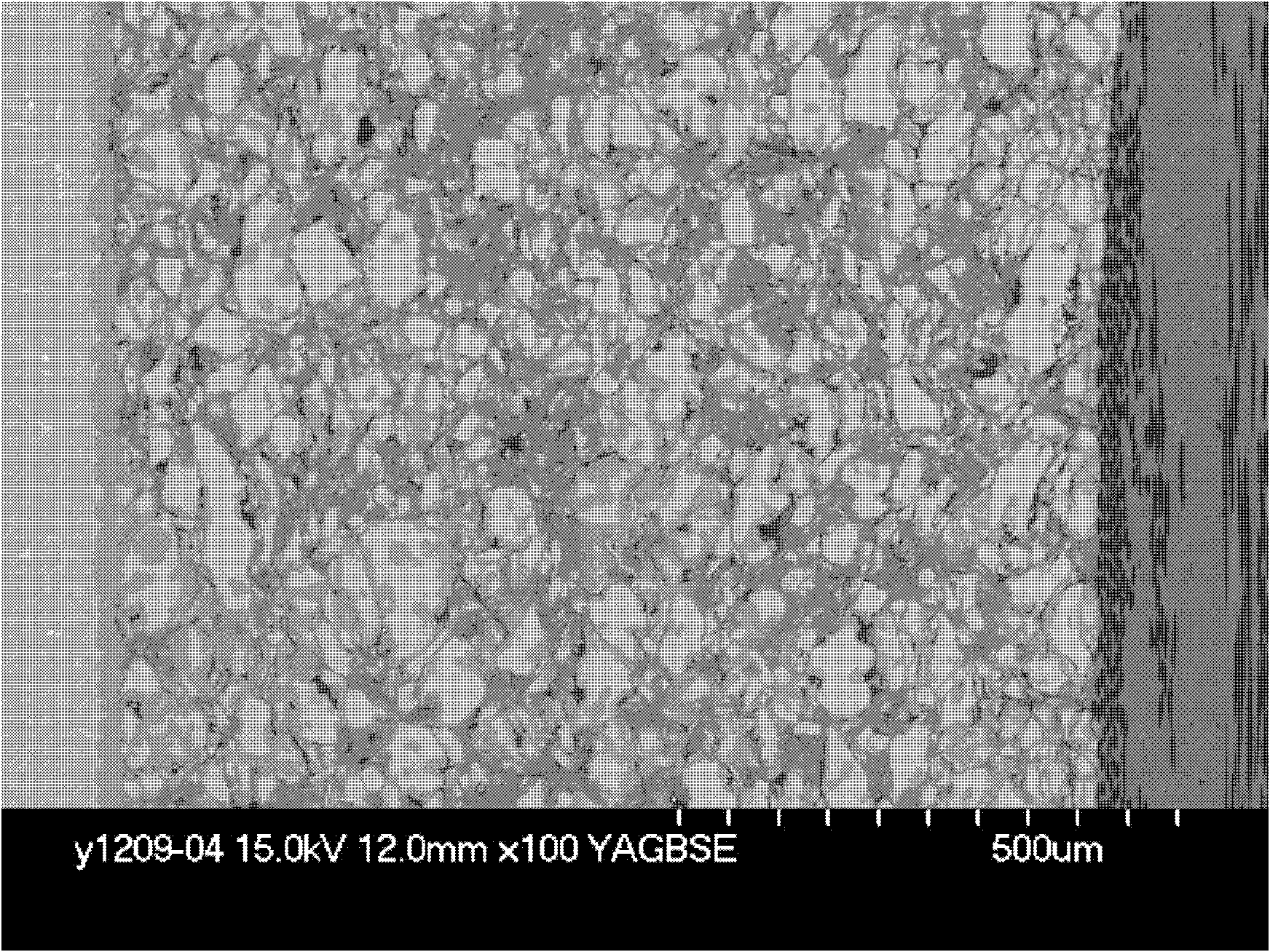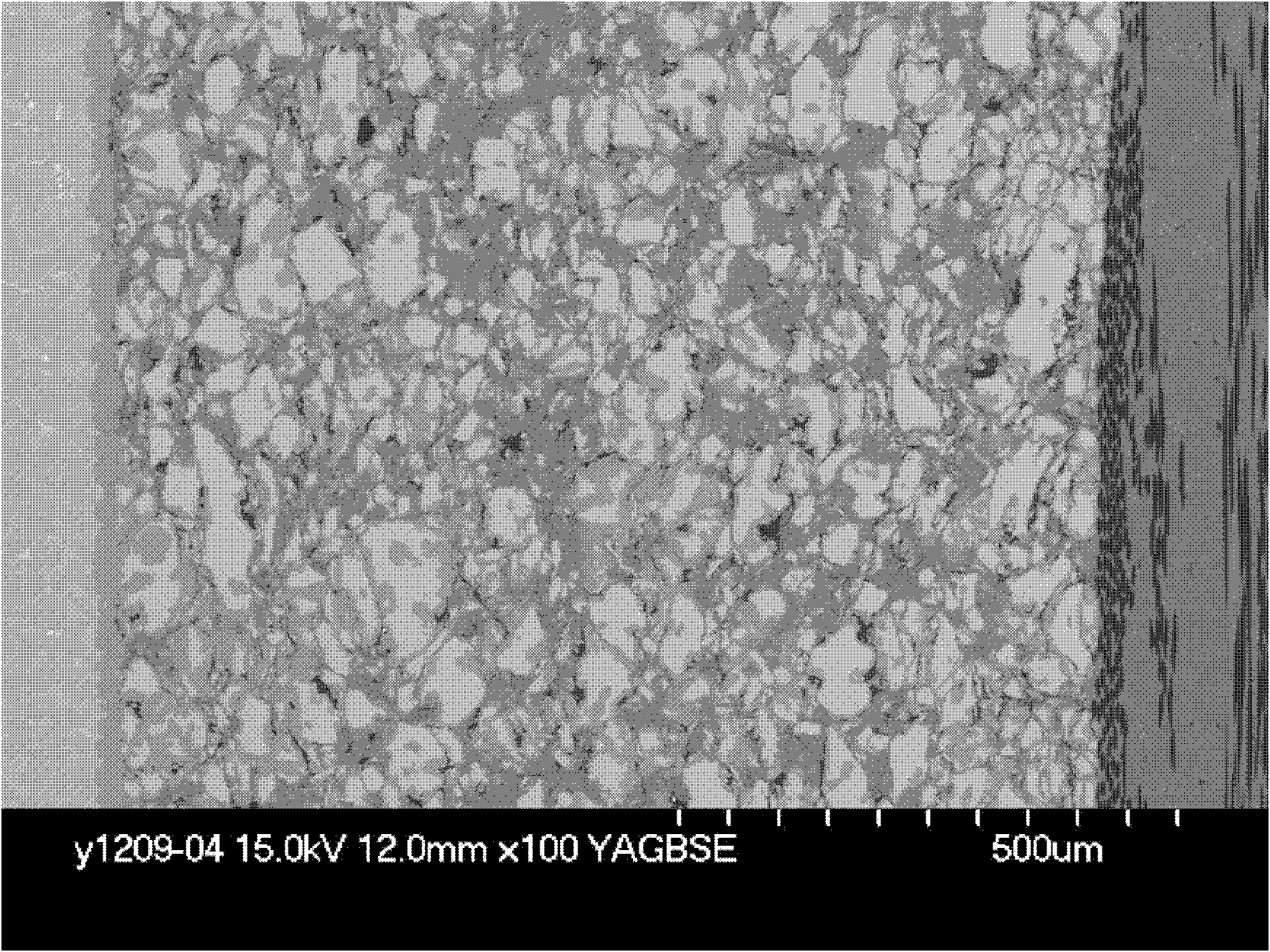Method for connecting carbon fiber-reinforced aluminum-based composite material and metal
A technology for strengthening aluminum-based and composite materials, applied in metal processing equipment, welding equipment, non-electric welding equipment, etc., can solve the problems of high heating temperature and deterioration of base metal performance, and achieve low ignition temperature, good metallurgical bonding, and connection quality Good results
- Summary
- Abstract
- Description
- Claims
- Application Information
AI Technical Summary
Problems solved by technology
Method used
Image
Examples
specific Embodiment approach 1
[0014] Embodiment 1: In this embodiment, the method of connecting carbon fiber reinforced aluminum matrix composite material and metal is carried out according to the following steps:
[0015] Step 1. According to the ratio of parts by weight, 31-35 parts of titanium powder with a mesh size ≥ 325 mesh, 41-45 parts of aluminum powder with a mesh size ≥ 325 mesh, 2-4 parts of nano-carbon powder, and 10-12 parts with a mesh size ≥ 325 mesh Mix tin powder and 9-11 parts of copper powder with a mesh size ≥ 325 mesh, put them in a ball mill tank, put balls in a ball-to-material mass ratio of 5:1, protect with argon, and mill at a speed of 300-500r / min 2~3h to get the mixed powder;
[0016] Step 2, pressing the mixed powder obtained in Step 1 into an intermediate layer with a relative density of 60% to 80% and a thickness of 1 to 3mm, and then put it in a closed container;
[0017] Step 3. Place the intermediate layer obtained in step 2 between the aluminum matrix composite material...
specific Embodiment approach 2
[0018] Specific embodiment 2: The difference between this embodiment and specific embodiment 1 is that in step 1, 32 to 34 parts of titanium powder with a mesh size ≥ 325 mesh, 42 to 43 parts of aluminum powder with a mesh size ≥ 325 mesh, Mix 2.5-3.5 parts of nano carbon powder, 10.5-11.5 parts of tin powder with a mesh size ≥325 mesh and 9.5-10.5 parts copper powder with a mesh size ≥325 mesh. Other steps and parameters are the same as in the first embodiment.
specific Embodiment approach 3
[0019] Specific embodiment three: the difference between this embodiment and specific embodiment one is that in step one, 33 parts of titanium powder with a mesh number ≥ 325 mesh, 42.5 parts aluminum powder with a mesh number ≥ 325 mesh, and 3.0 parts of nano-carbon Powder, 11 parts of tin powder with a mesh number ≥ 325 mesh and 10 parts copper powder with a mesh number ≥ 325 mesh. Other steps and parameters are the same as in the first embodiment.
PUM
| Property | Measurement | Unit |
|---|---|---|
| Thickness | aaaaa | aaaaa |
| Thickness | aaaaa | aaaaa |
Abstract
Description
Claims
Application Information
 Login to View More
Login to View More - R&D Engineer
- R&D Manager
- IP Professional
- Industry Leading Data Capabilities
- Powerful AI technology
- Patent DNA Extraction
Browse by: Latest US Patents, China's latest patents, Technical Efficacy Thesaurus, Application Domain, Technology Topic, Popular Technical Reports.
© 2024 PatSnap. All rights reserved.Legal|Privacy policy|Modern Slavery Act Transparency Statement|Sitemap|About US| Contact US: help@patsnap.com









